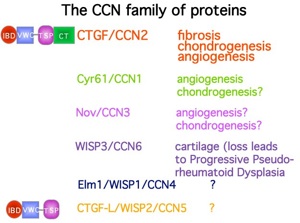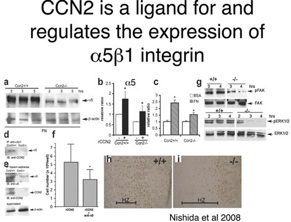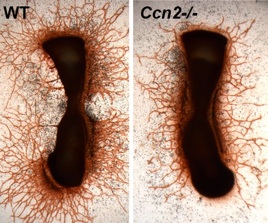Matricellular proteins

Matricellular proteins have been defined as residing in the ECM, but having regulatory rather than structural roles. The CCN family of matricellular proteins includes connective tissue growth factor (CCN2/CTGF), CCN1/Cyr61, CCN3/NOV, and CCN4/Wisp1. These proteins have a modular structure, containing several domains that mediate protein-protein interactions (von Willebrand type C, thrombospondin, cysteine knot). CCN family members have been shown to interact with a large number of extracellular matrix (ECM) molecules, integrins, growth factors, and their receptors. However, the physiological relevance of most of these interactions has not been established, and will require in vivo analyses.
CCN2 is best known for its ability to mediate excess ECM formation during wound healing and other fibrotic conditions. In fact, it is the major mediator of TGF-beta-induced ECM production in all fibrotic conditions described to date. For this reason, it is important to understand the physiological roles of CCN2 and other CCN family members.

SUGGESTED READING
Chen CC, Lau LF. (2009) Functions and Mechanisms of Action of CCN Proteins. Int J Biochem Cell Biol. 2009 Apr;41(4):771-83.
Nishida T, Kawaki H, Baxter RM, Deyoung RA, Takigawa M, Lyons KM.(2007) CCN2 (Connective Tissue Growth Factor) is essential for extracellular matrix production and integrin signaling in chondrocytes.J Cell Commun Signal. 1:45-58.



Lyons Lab